May 14
2021 May 14
Message from Gordon Hart:
Hello Butterfly Counters,
Our May count will begin this Saturday, May 15, until Sunday, May 23. This is an informal census of numbers and species of butterflies found in Greater Victoria. At the end of the year, I will summarize the results for publication in The Victoria Naturalist magazine. The count area is defined by the Christmas Bird Count circle, extending from Victoria to Brentwood Bay and Island View Road in Central Saanich, and west to Happy Valley and Triangle Mountain, and Langford Lake and Goldstream areas.
You can submit a count any time over the count period; just use a separate form for each count and location. In the case of repeat or duplicate counts, I will use the higher numbers. To submit counts, please use the form on the VNHS website at: https://www.vicnhs.bc.ca/?p=33.
If you have difficulty with the form, just send me an email with the information.
Thank-you for submitting your sightings and good luck with your count.
Gordon
Gordon Hart,
Butterfly Count Coordinator,
Victoria Natural History Society
Jeremy Tatum writes: Here is the pupa formed by the Hypena caterpillar shown on May 9. That reminds me that I had forgotten that I promised to say what special feature tells us that the caterpillar is Hypena. Otherwise it is just an ordinary green caterpillar that could be almost anything. Most non-geometrid caterpillars have four pairs of mid-abdominal prolegs. A few (plusiines) have two, but if it has three, we are more or less restricted to Nola and Hypena. If it is tiny, brown, very hairy, and feeds on alder, it is Nola. If it is smooth, green, and feeds on nettle, it is Hypena. When the moth emerges, we hope we’ll be able to determine the exact species.
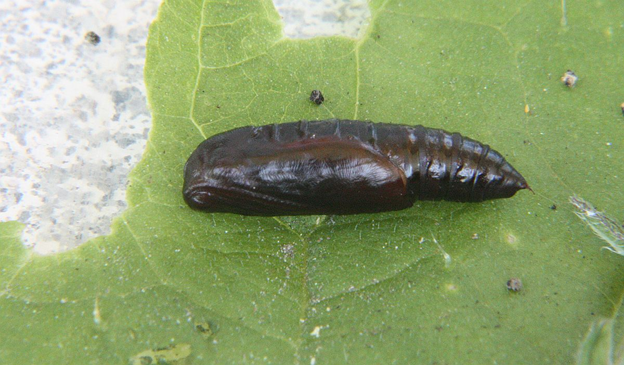
Hypena sp. (Lep.: Erebidae – Hypeninae) Jeremy Tatum
Here is a Spotted Tiger Moth:
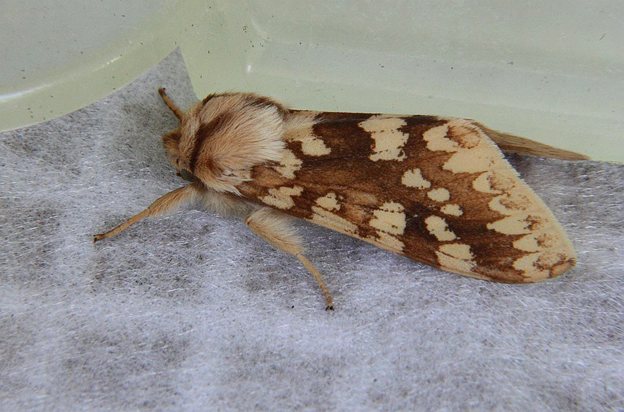
Spotted Tiger Moth Lophocampa maculata (Lep.: Erebidae – Arctiinae) Jeremy Tatum
Val George writes: Yesterday afternoon, May 13, I walked the rail line at Cowichan Station for about an hour. Here’s the butterfly score: at least six Margined Whites; a dozen or so other white butterflies, at least some of them Cabbage Whites; three Western Spring Azures; two Satyr Commas; one Mylitta Crescent; one Western Tiger Swallowtail.
Jeremy Tatum writes: It is interesting that this species seems particularly to like nectaring at Herb Robert. Indeed, if you are walking along the Cowichan railway line and are wondering if the white butterflies you are seeing are Cabbage Whites or Margined Whites, if they are nectaring on Herb Robert that’s a very good indication that they are Margined Whites. Also of interest is that Herb Robert is not a native plant, but is an introduced European one.
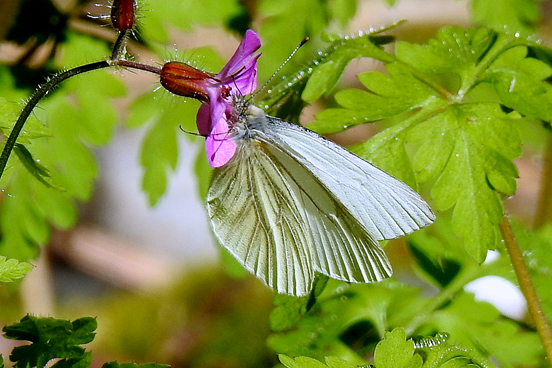
Margined White Pieris marginata (Lep.: Pieridae) Val George
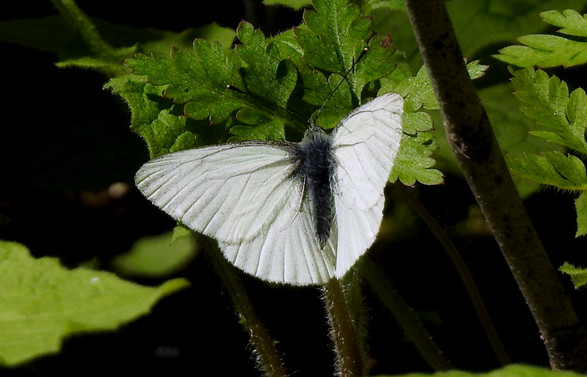
Margined White Pieris marginata (Lep.: Pieridae) Val George
Jochen Möhr sends photographs of two moths from Metchosin, May 12.
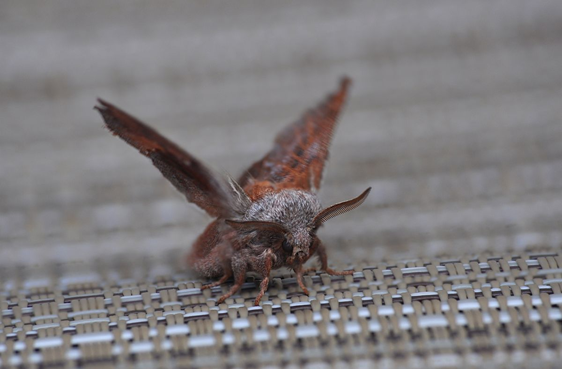
American Lappet Moth Phyllodesma americana (Lep.: Lasiocampidae) Jochen Möhr
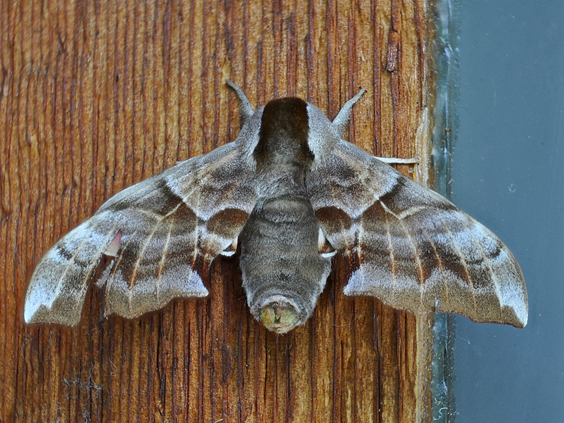
Smerinthus ophthalmica (Lep.: Sphingidae) Jochen Möhr
Jeremy Tatum writes: We used to call this moth Cerisy’s Eyed Hawk Moth, but now that the taxonomists believe that this species is distinct from S. cerisyi, we don’t, as far as I know, have an English name for it. Suggestions, anyone?
